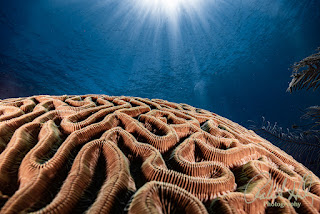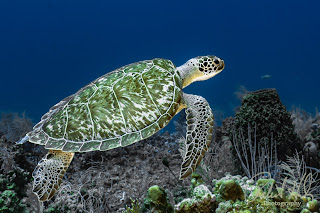Mastering White Balance in Lightroom for Natural Underwater Colors (2025)
Have you ever surfaced from an exhilarating dive, eager to relive the underwater adventure, only to be disappointed with the dull, bluish tint in your photographs? That feeling of letdown can be all too familiar, especially when the stunning reds, vibrant oranges, and sunny yellows you witnessed seem lost in translation. Rest assured, you’re not alone in this experience, Oceanic Explorer! Even the most advanced cameras can struggle to accurately capture the vibrant colors of the underwater world. The culprit? Water absorbs light to alter the colors we see, making it challenging to replicate that stunning, true-to-life appearance in our images.
This is where mastering white balance in Lightroom becomes essential, particularly with the cutting-edge AI tools introduced in 2025. By adjusting the white balance effectively, you can transform your images and bring those lively colors back to life. In this updated guide, I’m excited to walk you through restoring the natural colors of your underwater shots using the enhanced features found in Lightroom versions 14.1 and 14.2.
I’ll combine and refine the best practices I’ve previously shared, offering you a comprehensive approach tailored to all types of underwater photography. Whether you’re documenting the beauty of shallow coral gardens, capturing the intricate details of marine life, or exploring deep wrecks illuminated by strobes, this step-by-step workflow is designed to empower you. Each step will help you enhance your images, ensuring that the breathtaking views you experienced during your dives are accurately reflected in your photos. Let’s dive in together and make your underwater images as vibrant and captivating as the scenes you witnessed beneath the waves!
Step-by-Step: Fixing White Balance Using Lightroom 14.2
(2025)
Step 1: Import & Enter the Develop Module
- Shortcut:
Press D to jump into the Develop module.
- Import
your RAW images (always shoot in RAW!) for maximum color correction
flexibility.
Step 2: Start with AI Auto or the Eyedropper
- Option
1 – Auto (AI Enhanced in 14.1+)
Press Shift + U
Lightroom’s AI-based Auto White Balance now uses machine learning to intelligently detect underwater hues and provides a better baseline than in previous versions. - Option
2 – White Balance Selector (Eyedropper Tool)
Press W
To establish a base, click on something neutral, like white sand, a diver’s tank, or light coral. This works best in shallow or well-lit conditions.
Step 3: Manually Adjust Temperature & Tint
Fine-tune from there:
- Temperature:
Slide toward yellow (+20 to +50) to counteract blue.
- Tint:
Slide toward magenta (+10 to +20) to neutralize green.
- These
sliders are more responsive now, with smoother transitions introduced in
Lightroom 14.2.
Example: A 30-foot reef scene may need +35 Temp and
+15 Tint to recover coral tones accurately.
Step 4: Use AI Masking for Selective Corrections
Lightroom’s Masking Panel (now accessible with Shift +
W) allows for intelligent, targeted white balance correction:
Select Subject or Select Background
- Mask a
diver or fish using Select Subject.
- Apply
a separate white balance or saturation tweak only to the
subject.
New in 14.2: Color Range with AI Refinement
- Use Color
Range Mask to isolate faint reds/yellows in coral or marine life.
- AI-enhanced
edge detection ensures clean separation from blue water.
Example: Select orange soft corals at 15 feet and
increase red saturation by +25 and luminance by +10 without affecting the
background.
Step 5: Refine with HSL/Color Panel
The HSL Panel is still your best friend for
tuning specific color ranges:
- Boost Red
Saturation (+20) to bring life to fish or coral.
- Reduce Blue
Saturation (-10) if the scene looks too monochrome.
- Shift Green
Hue (-10) to pull olive-green water closer to natural teal.
Shortcut Tip: Press Alt + H to solo-view
individual colors for quicker edits.
Step 6: Add Depth with Color Grading (Optional but
Powerful)
In the Color Grading Panel, you can:
- Warm Highlights to
simulate sunlight
- Cool Shadows for
richer depth
- Add a
soft orange hue to Midtones to counteract murkiness
Use the circular color wheels intuitively, or press Ctrl
+ Alt + Shift + 1 to reset them.
Step 7: Save as Presets for Specific Depths - Last week's Blog Post, "Creating Custom Color Profiles for Different Depths with Lightroom AI (Update)," details how to create Color Depth Presets.
Creating presets for different depth ranges is a considerable
timesaver:
- Go
to Presets Panel, click the +, and select Create
Preset.
- Name
your preset clearly (e.g., “15ft Caribbean Reef”).
- Include
only the settings relevant to color correction (Temp, Tint, HSL, Masking).
You can batch-apply this preset to similar shots in
the Library Module with Sync Settings.
Examples of Depth-Based White Balance Edits
🔹 Shallow (0-10 ft)
Minimal correction needed. Use the eyedropper and add warmth
(+10 Temp).
AI Masking can isolate fish and selectively boost reds.
🔹 Mid-Depth (10-30
ft)
Use Dehaze (+15) to cut haze. For warm hues, use a Color Range mask. Adjust Tint (+15) and Temp (+30).
Example: Soft coral reef scene at 25 ft, recover reds, lower green
luminance.
🔹 Deep (30-60 ft)
Strong blue cast. Increase Temp (+40) and Tint (+25). Add
warmth in Color Grading.
Use Tone Curve to create an “S” shape for more contrast in blue
environments.
🔹 The Abyss (60+ ft
with strobes)
Artificial light introduces color complexity. Use local masks to separate the background blue from the foreground lighted subject.
Noise Reduction (Detail Panel): Use +30 Luminance to clean up shadow
zones.
New in 2025: AI-Powered Subject-Aware Presets
Lightroom 14.2 now recognizes underwater elements like
coral, fish, and divers. You can include AI masks when saving a preset, allowing one-click targeted edits per subject type.
Pro Tip: Combine this with Batch Edit to
correct 100+ dive photos in minutes.
Final Thoughts: White Balance Is Where the Magic Begins
Achieving the perfect white balance is essential for transforming your underwater memories into stunning visual stories that reflect how you experienced them. With Lightroom’s cutting-edge AI tools, the editing process has been revolutionized; what took you a painstaking 20 minutes for each photo can now be adjusted in seconds, gaining even greater accuracy.
The techniques mentioned above serve as foundational skills for anyone looking to enhance their underwater photography. Whether you're working on vibrant reef scenes around 10 feet deep or seeking to unveil the mysterious beauty of deep wrecks, these skills are invaluable. Don't rush through the process; take your time to trust your instincts and artistic vision. Remember, Lightroom is here to support you in narrating your underwater adventures vividly and authentically, ensuring that every image captures the essence of your experience.
Want More?
I’m building an online training program designed
just for underwater enthusiasts who want to enhance their post-processing
skills with Lightroom. Email me at bob@robertherb.com or visit
the Training Page to join the early access list.
Follow my blog for weekly tips at Robert Herb Blog and
share your edits with #RobertHerbPhotography—I’d love to see how
you bring your images to life!
- 💡 Read more Lightroom tips and get weekly updates when new blogs are published at: Robert Herb Blog.
- 💡 Join my upcoming online training program – Learn to enhance your underwater shots with Adobe Lightroom! Sign up for a FREE "Before & After" Gallery.
- 💡 Share your processed photos on social media using #RobertHerbPhotography.
- 💡 Questions or want help with your Lightroom workflow? Email me at bob@robertherb.com
Written by Robert Herb – Empowering underwater photographers to capture and enhance the beauty of our oceans.
Stay tuned for more in-depth insights into underwater photography. Let’s dive deeper into the art and craft of capturing the marine world! If you have any comments or suggestions, I’d love to hear them.
Get ready for an exciting underwater photography adventure! For more details on my upcoming online training course, check out my "Training" page at RobertHerb.com or email me at bob@robertherb.com.
Sincerely,
Bob Herb
|
|





Comments
Post a Comment
Please let me know your comments.